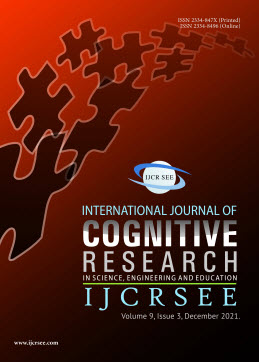Relationship Between Facial Areas With the Greatest Increase in Non-local Contrast and Gaze Fixations in Recognizing Emotional Expressions
Relationship Between Facial Areas With the Greatest Increase in Non-local Contrast and Gaze Fixations in Recognizing Emotional Expressions
Author(s): Vitali Babenko, Denis Yavna, Ekaterina Denisova, Pavel Ermakov, Ekaterina KovshSubject(s): Cognitive Psychology
Published by: Удружење за развој науке, инжењерства и образовања
Keywords: face; emotion; eye movements; nonlocal contrast; second-order visual mechanisms
Summary/Abstract: The aim of our study was to analyze gaze fixations in recognizing facial emotional expressions in comparison with o the spatial distribution of the areas with the greatest increase in the total (nonlocal) luminance contrast. It is hypothesized that the most informative areas of the image that getting more of the observer’s attention are the areas with the greatest increase in nonlocal contrast. The study involved 100 university students aged 19-21 with normal vision. 490 full-face photo images were used as stimuli. The images displayed faces of 6 basic emotions (Ekman’s Big Six) as well as neutral (emotionless) expressions. Observer’s eye movements were recorded while they were the recognizing expressions of the shown faces. Then, using a developed software, the areas with the highest (max), lowest (min), and intermediate (med) increases in the total contrast in comparison with the surroundings were identified in the stimulus images at different spatial frequencies. Comparative analysis of the gaze maps with the maps of the areas with min, med, and max increases in the total contrast showed that the gaze fixations in facial emotion classification tasks significantly coincide with the areas characterized by the greatest increase in nonlocal contrast. Obtained results indicate that facial image areas with the greatest increase in the total contrast, which preattentively detected by second-order visual mechanisms, can be the prime targets of the attention.
Journal: International Journal of Cognitive Research in Science, Engineering and Education (IJCRSEE)
- Issue Year: 9/2021
- Issue No: 3
- Page Range: 359-368
- Page Count: 10
- Language: English

